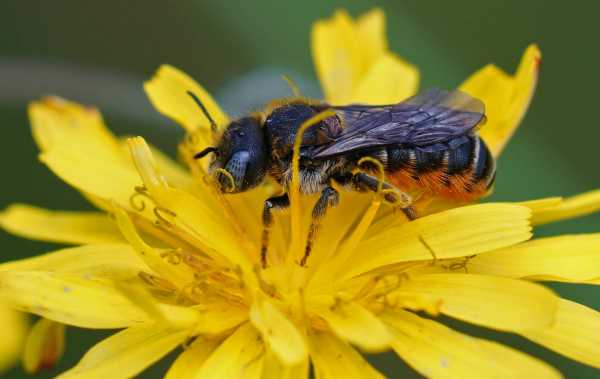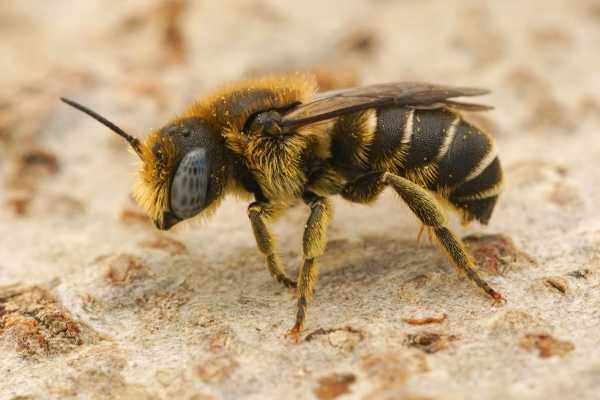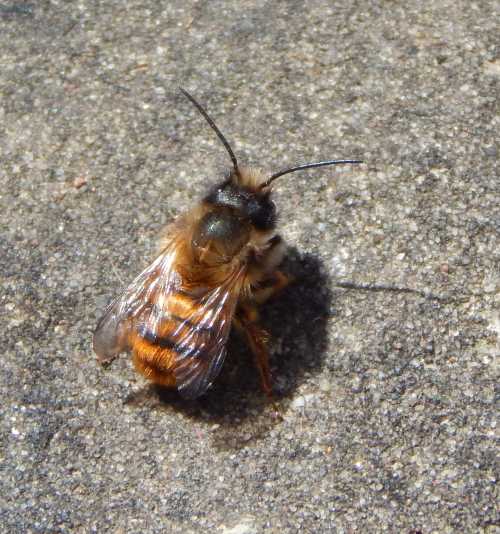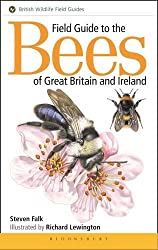Spined Mason Bee, Osmia spinulosa
The bee, Osmia spinulosa is, (according to entomologist and author, Steven Falk), the smallest of the Osmia (mason bee) species found in Britain1.
Osmia spinulosa is also found in other countries of Europe, including Germany, France, the Netherlands, Italy, Spain, the Czech Republic, Austria and Belgium2.
About Osmia spinulosa - The Spined Mason Bee
Females have a bright orange pollen brush under the abdomen. Males are missing the visible pollen brush, and have a tuft of hair ('moustache') on the front of their faces.
 Osmia spinulosa female on hawkbit. Note bright orange pollen brush on the underside of the abdomen.
Osmia spinulosa female on hawkbit. Note bright orange pollen brush on the underside of the abdomen.Both males and females have fringes of short, pale hair on the outer edges of each segment of their abdomens, which otherwise have little hair.

As with all bee species belonging to the Megachilidae bee family, Osmia spinulosa belongs in the 'long-tongued bee' category.
Habitat, flowers visited and nesting habits
This species is oligolectic on Asteraceae3. Look out for Osmia spinulosa from May onwards, in coastal areas with sand dunes, and limestone and chalkland areas where they'll typically visit knapweeds, hawkbits, Common Fleabane, ragworts, Oxeye Daisy, and thistles.
The spined mason bee, like their cousins, Osmia bicolor, nests inside empty snail shells, where they'll create up to three cells in each shell, using leaf material they have chewed with their mandibles (jaws) to form the partitions between each3.
The nest has an empty 'chamber' between the nest plug and outermost cell partition, which is more robust than the other cell partitions (and the nest plug), needing more than 30 flights with leaf pulp for its construction. This robust barrier may serve as a main deterrent against predators or parasites3.
Once the nest opening has been sealed, the female Osmia spinulosa then turns its completed nest so that the shell opening is directed tightly towards the ground. This position may provide additional protection against inclement weather3.
Medium-sized shells are selected, from snail species including Cepaea, Cernuella, Fruticicola, Helicella, Pomatias, Xerolenta, Zebrina and occasionally also young shells of Helix3.
References
1. Field Guide to Bees Of Great Britain And Ireland by Steven Falk, Bloomsbury 2015.
2. observation.org - Spined Mason Bee Osmia spinulosa (Kirby, 1802)
3. MÜller A. Palaearctic Osmia bees of the subgenus Hoplosmia (Megachilidae, Osmiini): biology, taxonomy and key to species. Zootaxa. 2018 Apr 30;4415(2):297-329. doi: 10.11646/zootaxa.4415.2.4. PMID: 30313623.
If you found this page helpful or interesting, I'd really be grateful if you would share it with others - if not this page, perhaps another, such as Gardening For Bees.
Thank you so much :) .

